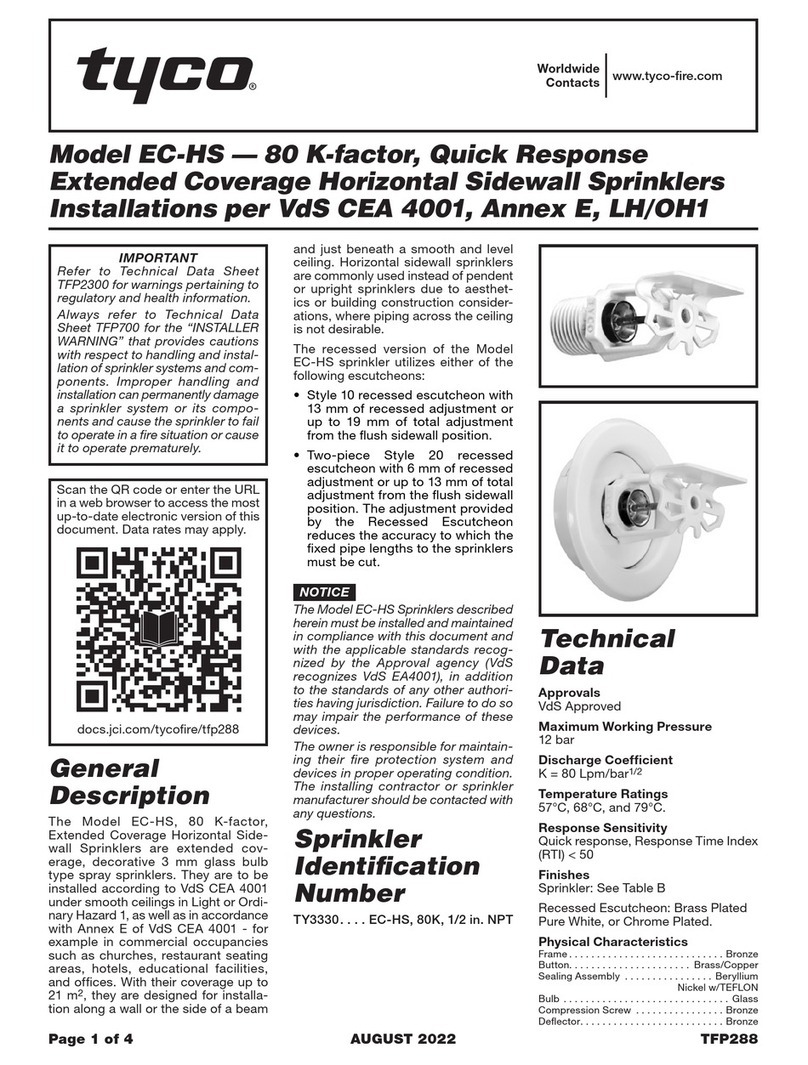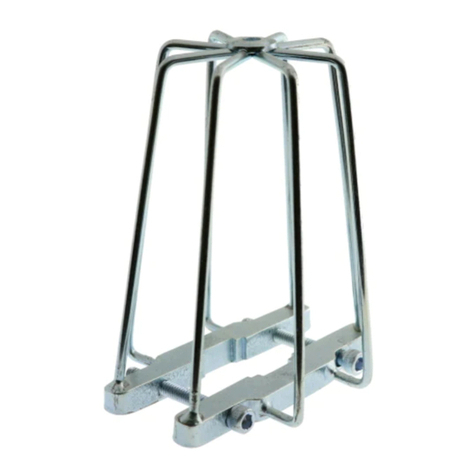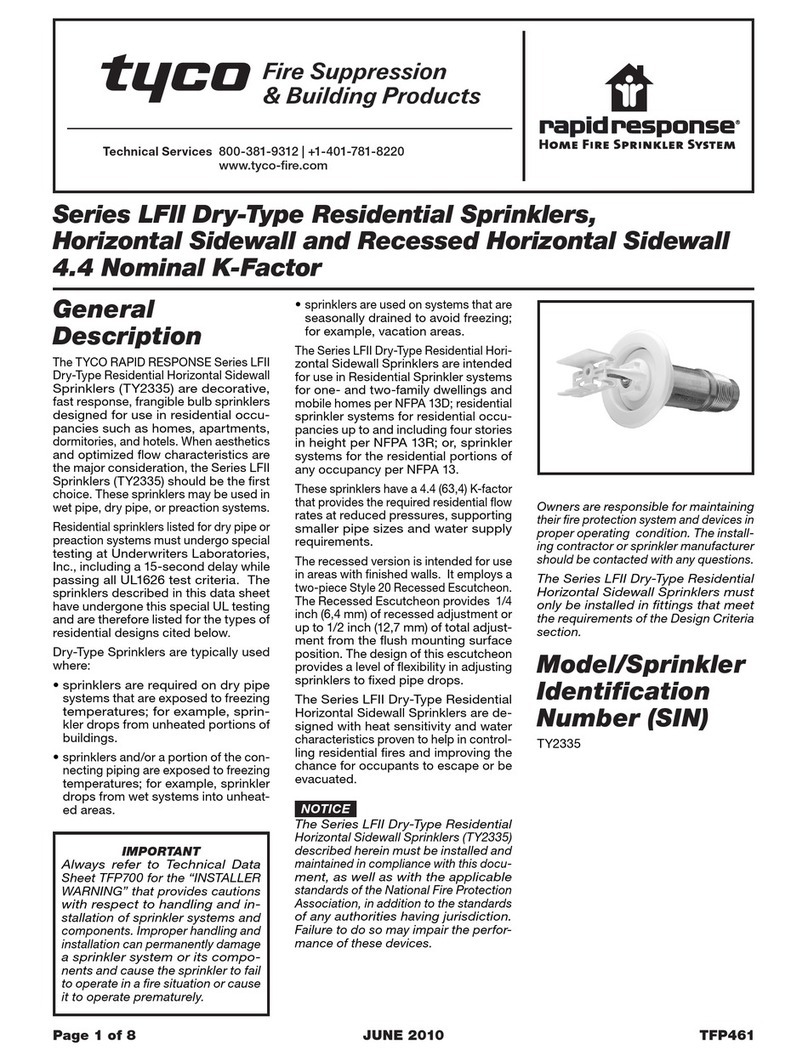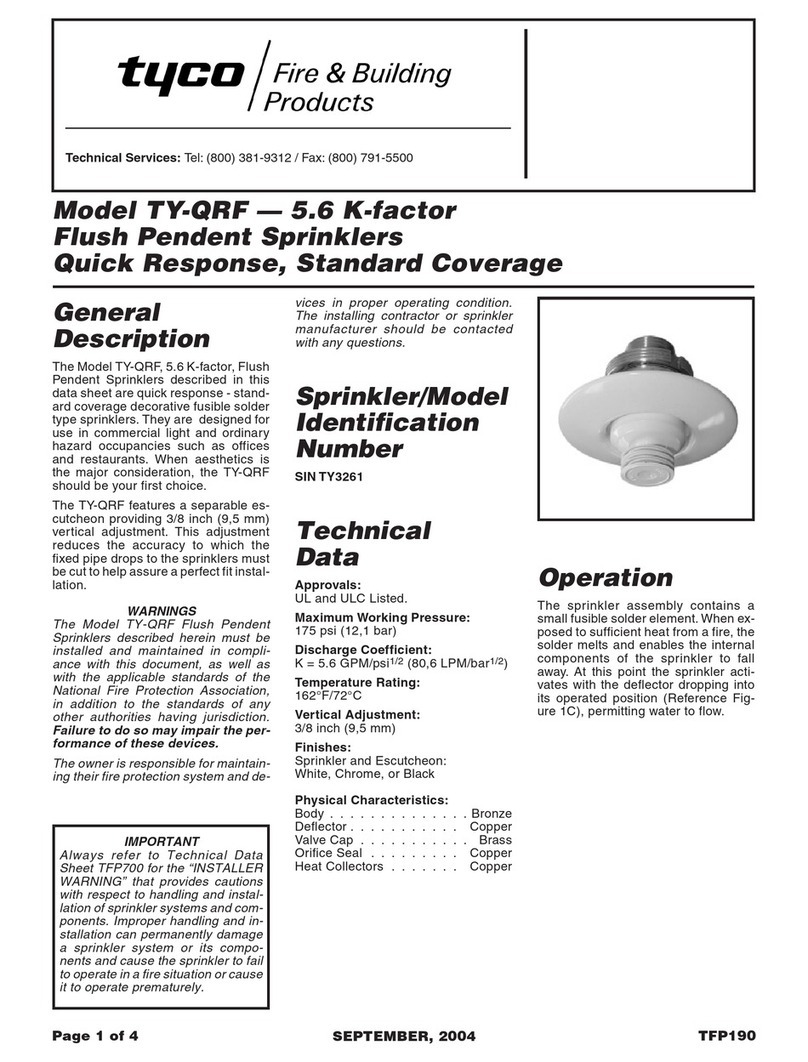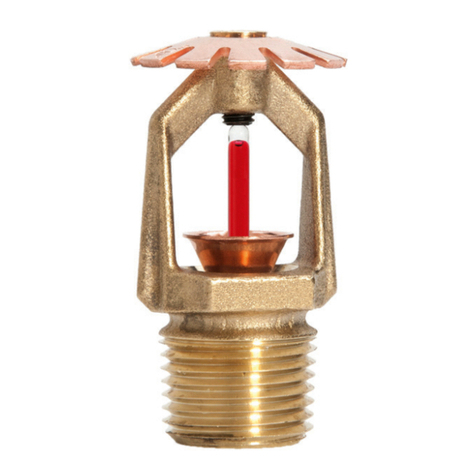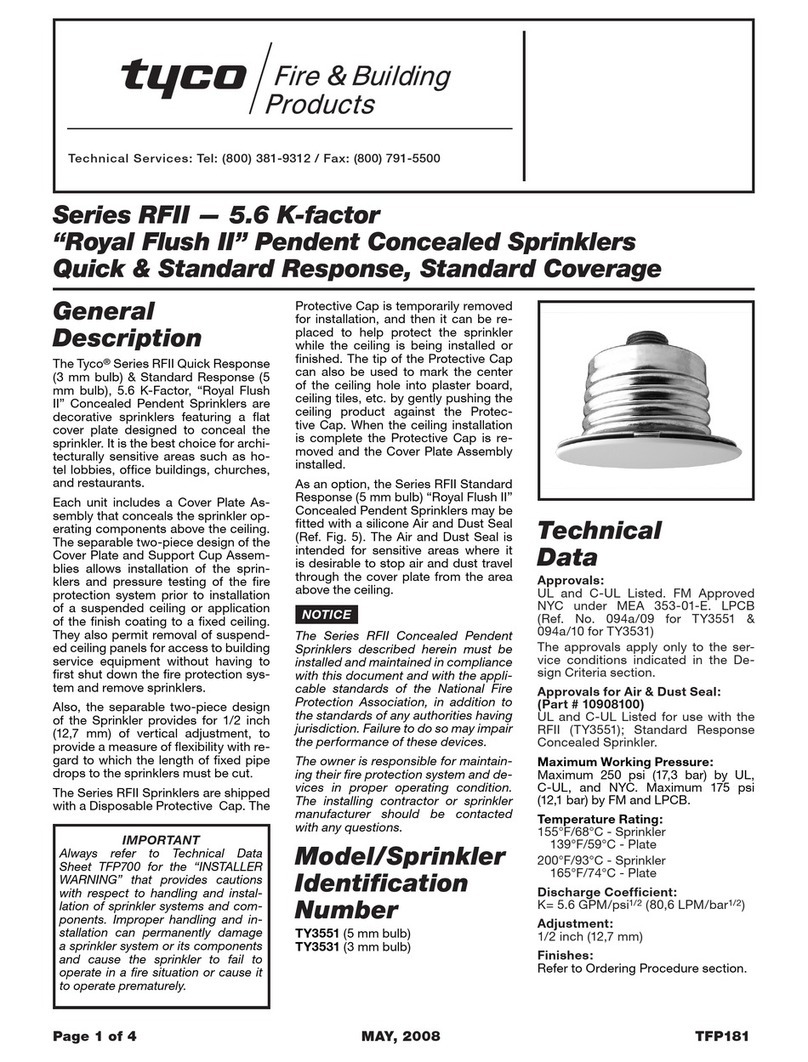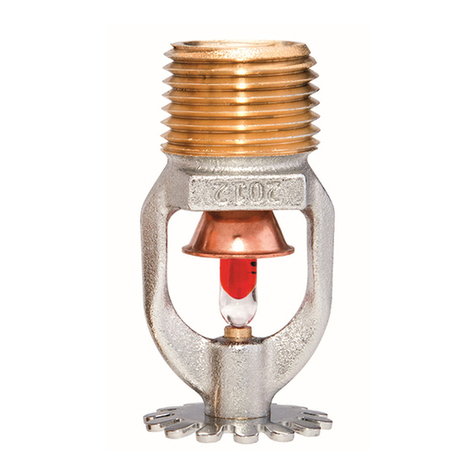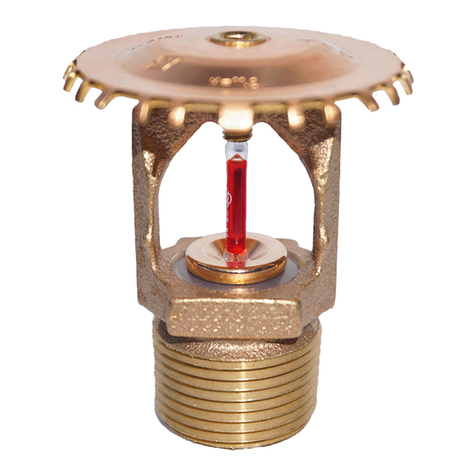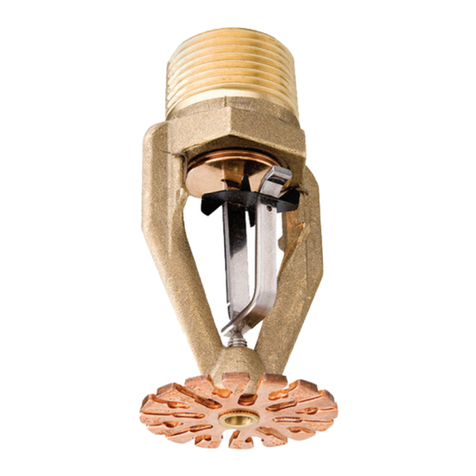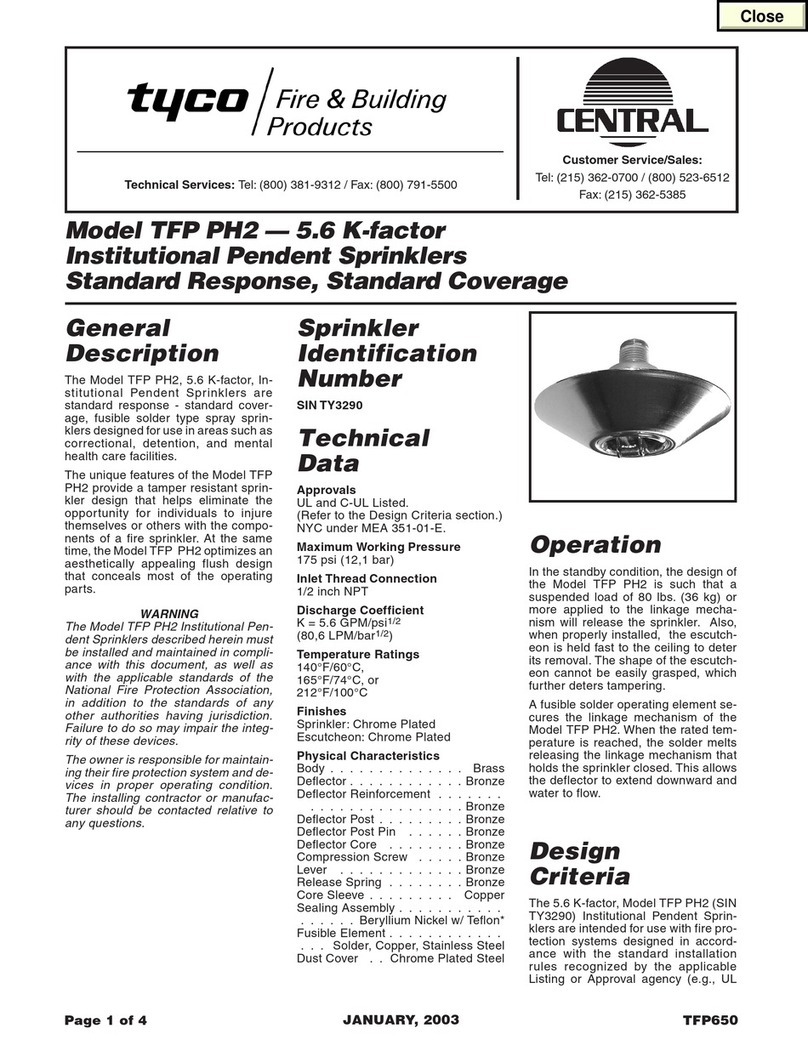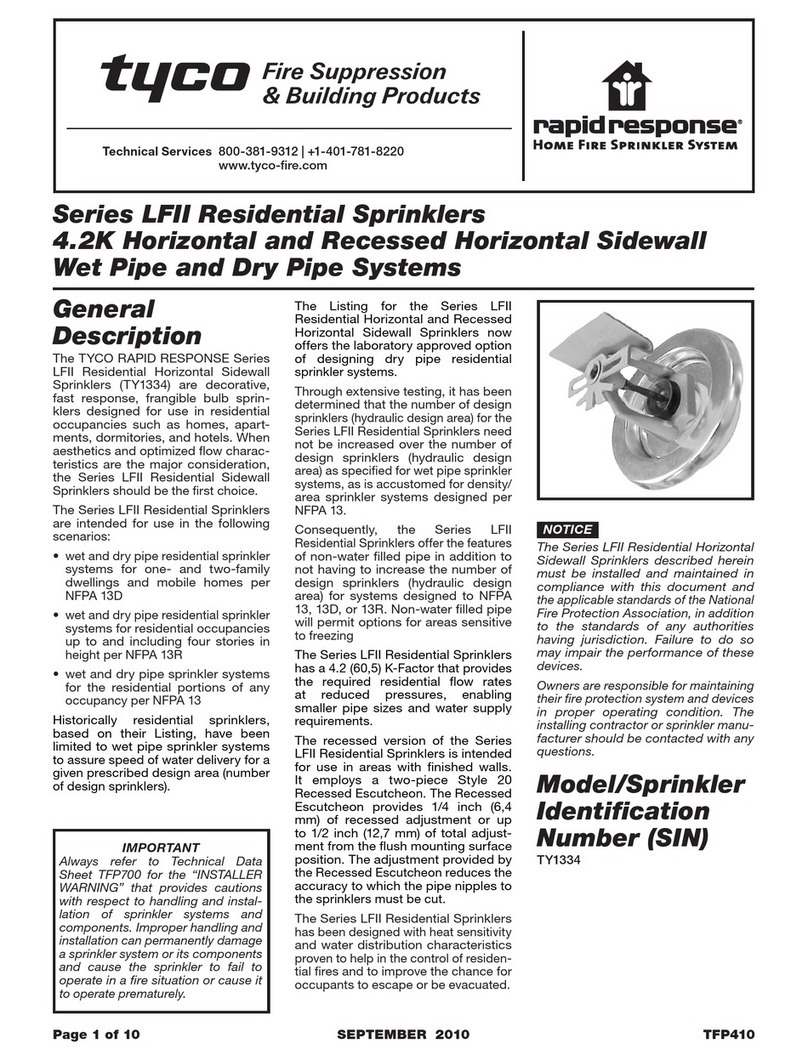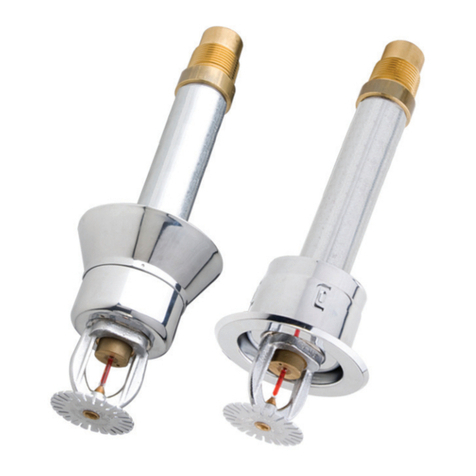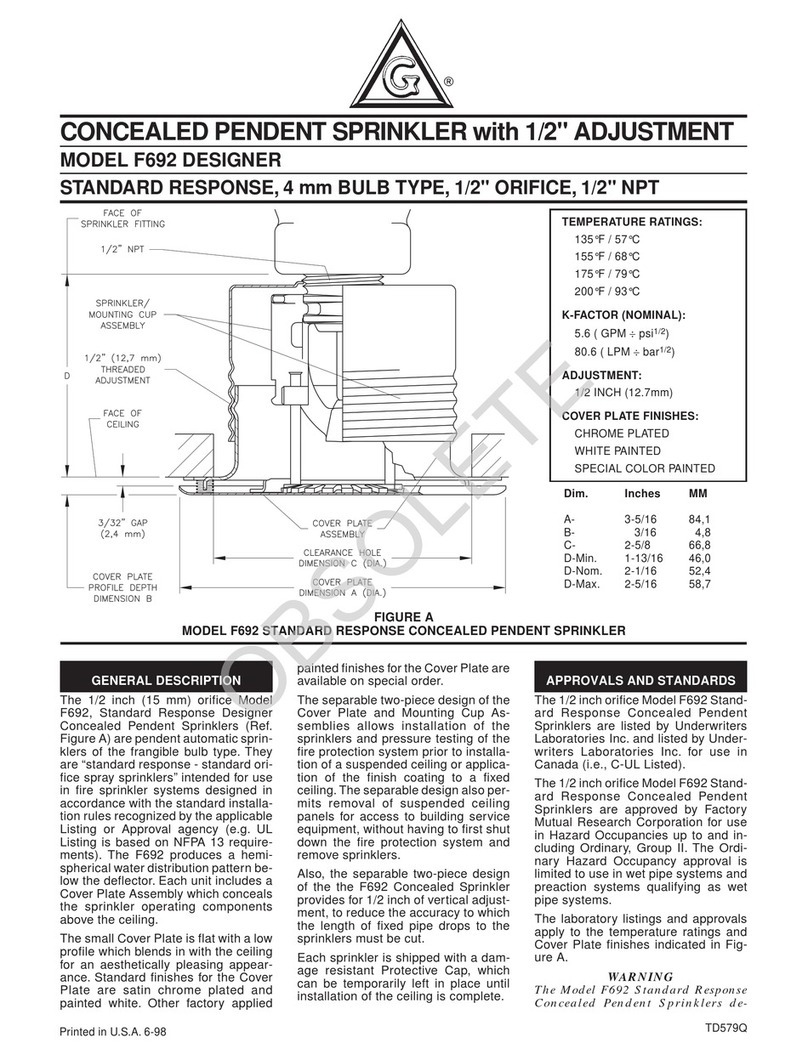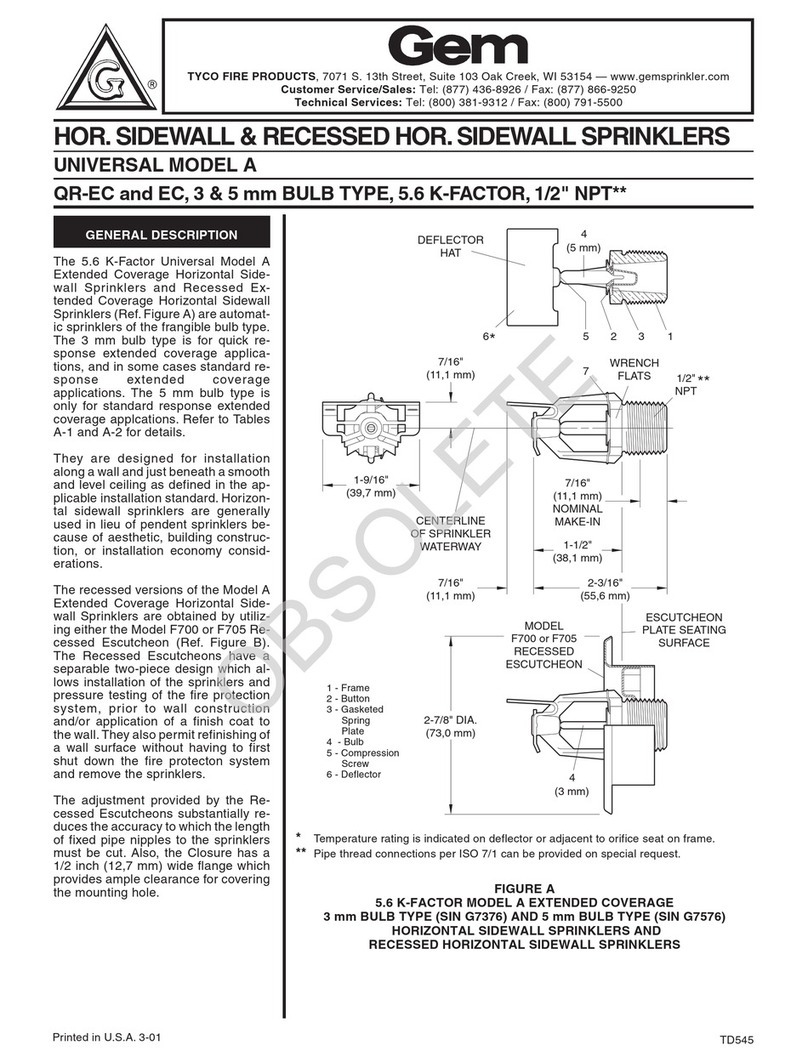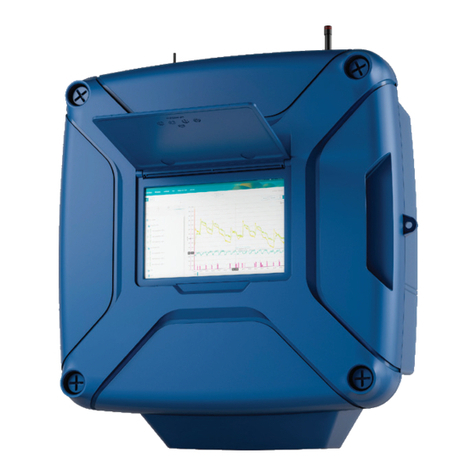
Installation
The Series TY-FRB Sprinklers must
be installed in accordance with the fol-
lowing instructions:
NOTES
Do not install any bulb type sprinkler if
the bulb is cracked or there is a loss of
liquid from the bulb. With the sprinkler
held horizontally, a small air bubble
should be present.The diameter of the
air bubble is approximately 1/16 inch
(1,6 mm).
A leak tight 1/2 inch NPTsprinkler joint
should be obtained with a torque of 7
to 14 ft.lbs. (9,5 to 19,0 Nm). A maxi-
mum of 21 ft. lbs. (28,5 Nm) of torque
may be used to install sprinklers with
1/2 NPT connections. A leak tight 3/4
inch NPT sprinkler joint should be ob-
tained with a torque of 10 to 20 ft.lbs.
(13,4 to 26,8 Nm). A maximum of 30
ft.lbs. (40,7 Nm)of torque is to be used
to install sprinklers with 3/4 NPT con-
nections. Higher levels of torque may
distort the sprinkler inlet and cause
leakage or impairment of the sprinkler.
Do not attempt to make-up for insuffi-
cient adjustment in the escutcheon
plate by under- or over-tightening the
sprinkler. Readjust the position of the
sprinkler fitting to suit.
The Series TY-FRB EC Sidewall
Sprinklers must be installed in ac-
cordance with the following instruc-
tions.
Step 1. Horizontal sidewall sprinklers
are to be installed with their centerline
perpendiculartotheback wallandpar-
allel to the ceiling. The word “TOP” on
the deflector is to face towards the
ceiling.
Step 2. With pipe thread sealant ap-
plied to the pipe threads, hand tighten
the sprinkler into the sprinkler fitting.
Step 3. Tighten the sprinkler into the
sprinkler fitting using only the W-Type
6 Sprinkler Wrench (Ref. Figure 7).
With reference to Figures 1 and 2, the
W-Type 6 Sprinkler Wrench is to be
applied to the sprinkler wrench flats.
The Series TY-FRB Recessed EC
Sidewall Sprinklers must be installed
in accordance with the following in-
structions.
Step A. Horizontal sidewall sprinklers
are to be installed with their centerline
perpendiculartotheback wallandpar-
allel to the ceiling. The word “TOP” on
the deflector is to face towards the
ceiling.
Step B. After installing the Style 10.
20, 30, or 40 Mounting Plate, as appli-
cable, over the sprinkler threads and
with pipe thread sealant applied to the
pipe threads, hand tighten the sprin-
kler into the sprinkler fitting.
Step C. Tighten the sprinkler into the
sprinkler fitting using only the W-Type
7 Recessed Sprinkler Wrench (Ref.
Figure 8). With reference to Figure 1
or2, the W-Type7 RecessedSprinkler
Wrenchis to beappliedto thesprinkler
wrench flats.
Step D. After the wall has been in-
stalled or the finish coat has been ap-
plied, slide on the Style 10, 20, 30, or
40 Closure over the Series TY-FRB
Sprinkler and push the Closure over
the Mounting Plate until its flange
comes in contact with the wall.
Care and
Maintenance
The Series TY-FRB Sprinklers must
be maintained and serviced in accord-
ance with the following instructions:
NOTES
Before closing a fire protection system
main control valve for maintenance
work on the fire protection system that
itcontrols,permissiontoshutdownthe
affectedfireprotectionsystemmustbe
obtained from the proper authorities
and all personnelwho may be affected
by this action must be notified.
The owner must assure that the sprin-
klers are not used for hanging of any
objects; otherwise, non-operation in
theeventof a fireorinadvertentopera-
tion may result.
Absence of an escutcheon, which is
used to cover a clearance hole, may
delay the time to sprinkler operation in
a fire situation.
Sprinklers that are found to be leaking
or exhibiting visible signs of corrosion
must be replaced.
Automatic sprinklers must never be
painted, plated, coated or otherwise
altered after leaving the factory. Modi-
fied sprinklers must be replaced.
Sprinklers that have been exposed to
corrosive products of combustion, but
have not operated, should be replaced
if they cannot be completely cleaned
by wiping the sprinkler with a cloth or
by brushing it with a soft bristle brush.
Care must be exercised to avoid dam-
age to the sprinklers - before, during,
and after installation. Sprinklers dam-
aged by dropping, striking, wrench
twist/slippage, or the like, must be re-
placed.Also,replaceanysprinklerthat
has a cracked bulb or that has lost
liquid from its bulb. (Ref. Installation
Section).
Frequent visual inspections are rec-
ommended tobe initially performed for
corrosion resistant coated sprinklers,
after the installation has been com-
pleted, to verify the integrity of the cor-
rosion resistant coating. Thereafter,
annual inspections per NFPA 25
should suffice; however, instead of in-
specting from the floor level, a random
sampling of close-up visual inspec-
tions should be made, so as to better
determine the exact sprinkler condi-
tion and the long term integrity of the
corrosion resistant coating, as it may
be affectedby the corrosiveconditions
present.
The owner is responsible for the in-
spection, testing, and maintenance of
their fire protection system and de-
vices in compliance with this docu-
ment, as well as with the applicable
standards of the National Fire Protec-
tion Association (e.g., NFPA 25), in
addition to the standards of any other
authorities having jurisdiction. The in-
stalling contractor or sprinkler manu-
facturer should be contacted relative
to any questions.
It is recommended that automatic
sprinkler systems be inspected,
tested, and maintained by a qualified
Inspection Service in accordance with
local requirements and/or national
codes.
TFP296 Page 7 of 8
